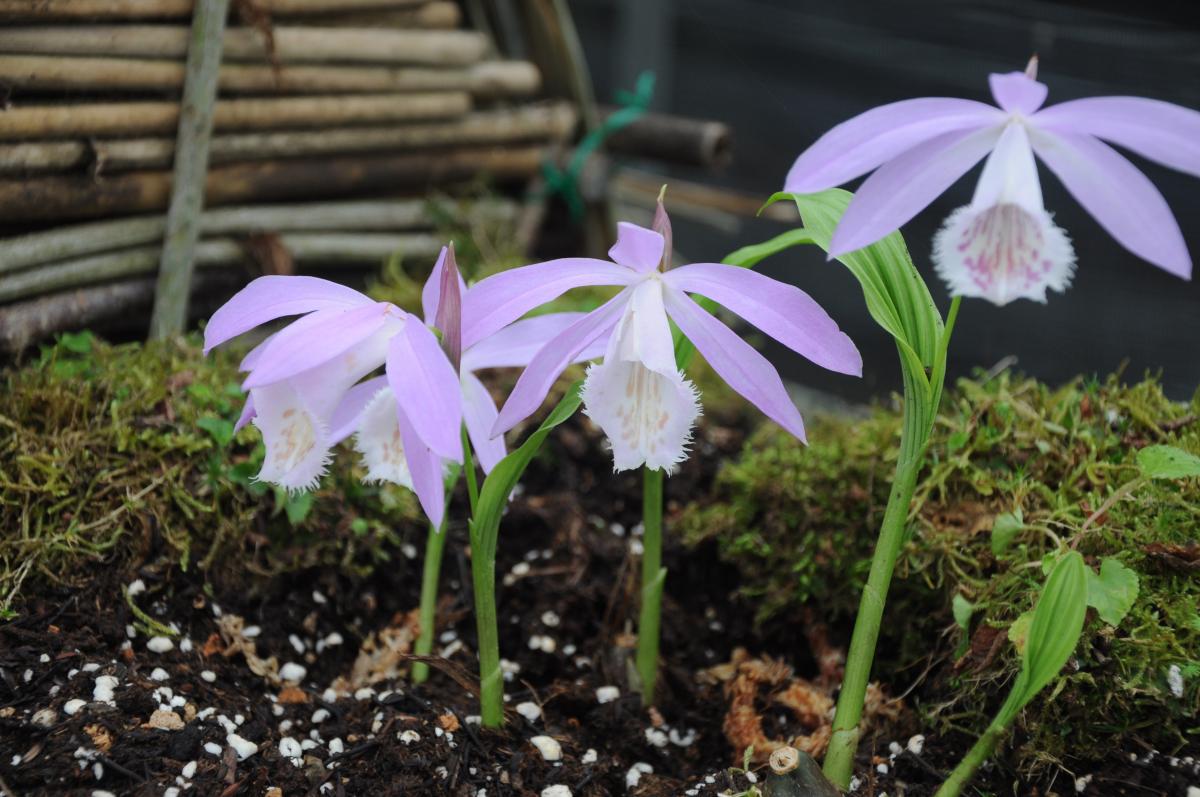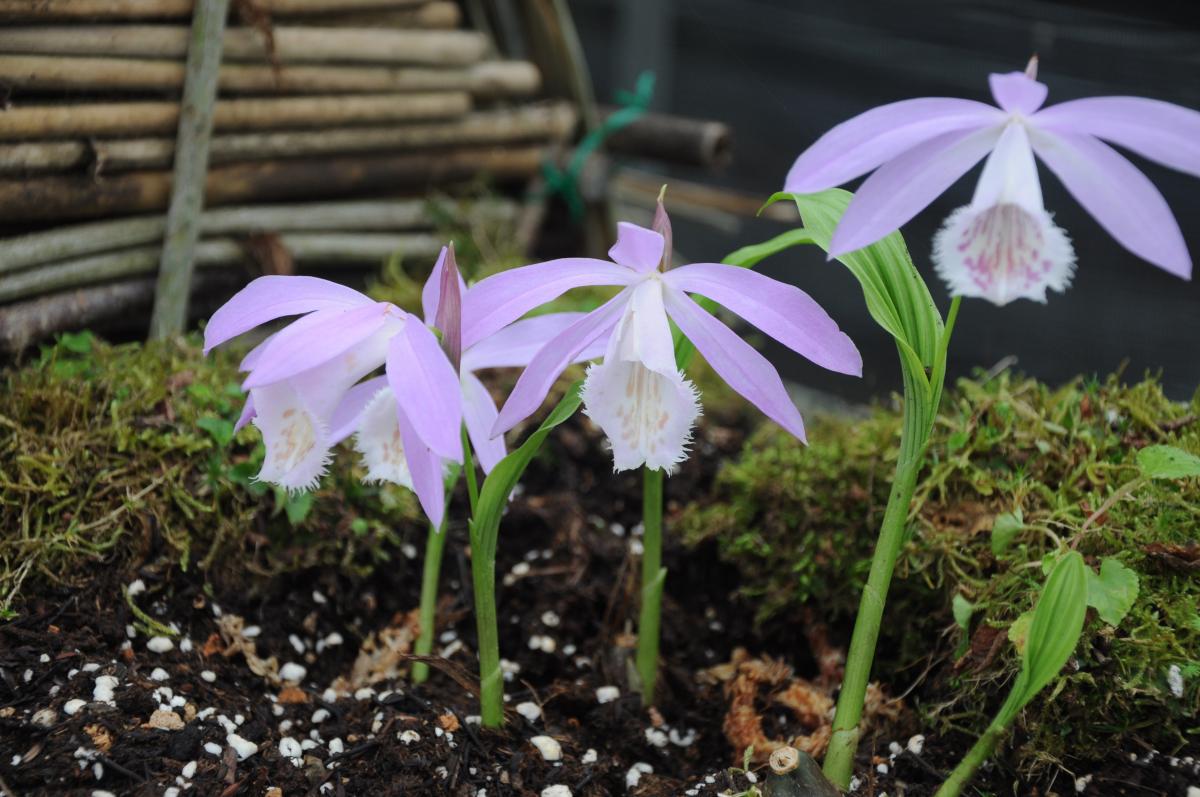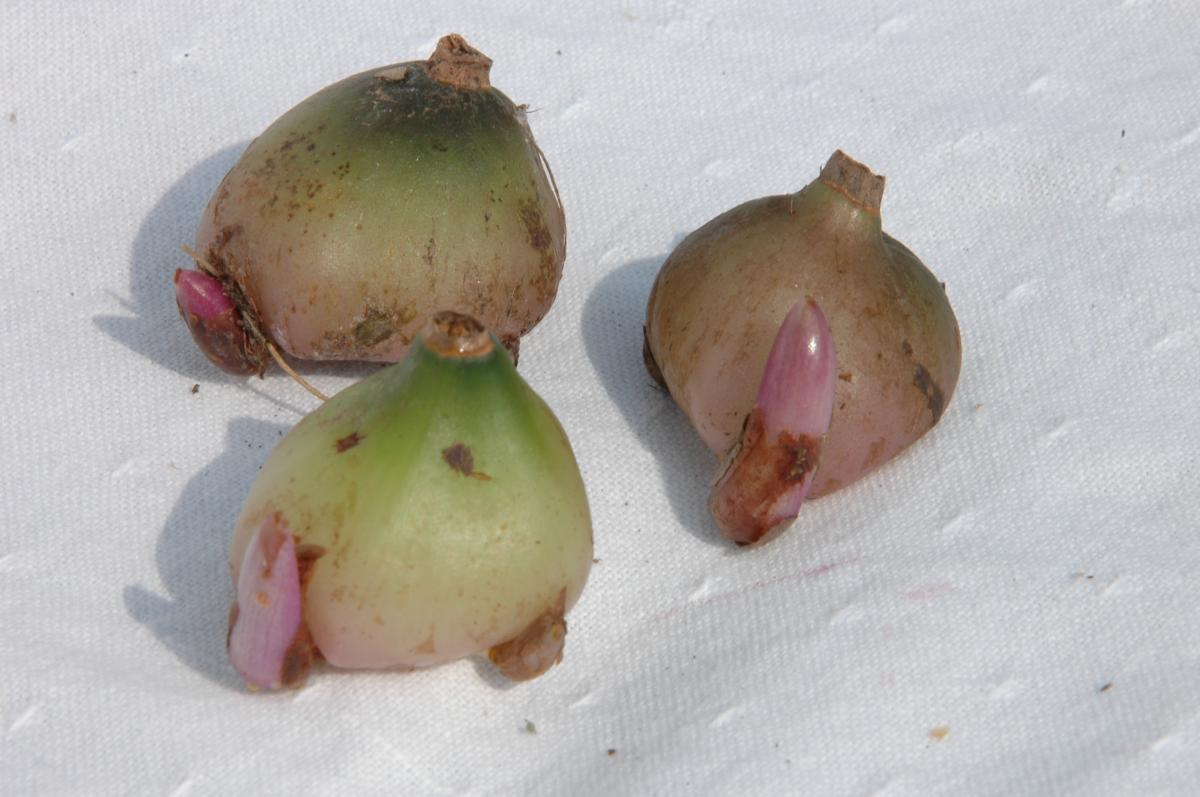蘭科
學名:Pleione formosana Hayata
英名:Taiwan Pleione
別名:一葉蘭、臺灣獨蒜蘭、獨蒜蘭、臺灣慈姑蘭、山慈姑
是臺灣高山的原生蘭之一,主要分佈於海拔1,500到2,500公尺山區的潮濕岩壁或樹幹上。植株小巧,具有發達的紫色錐狀假球莖,通常一球只長出一大一小的葉片或是只長一片大葉,因而得名。冬季落葉休眠,春季先開花後長葉,花色有粉紅至淺紫,唇瓣上有黃褐或紫紅斑,氣韻秀麗典雅,觀賞價值非常高。
Taiwan Pleione is one of the native orchids in Taiwan's high mountains, mainly distributed on humid rock walls or tree trunks in mountains at an altitude of 1,500 to 2,500 meters. This small plant bears a well-developed purple cone-shaped pseudocorm, each pseudocorm usually grows one large and one small leaf or only one large leaf, hence the Chinese name. The leaves are deciduous and dormant in winter, flowering first and then leaves sprouting in spring. The flower colors can range from pink to light purple, dotted with yellow-brown or purplish red flecks on the labella which adds an elegant touch to the plant and hence highly ornamental.
一葉蘭屬宿根性多年生草本。紫色假球莖角錐狀。長披針形葉具縱摺紋。假球莖於開花後長葉,冬季會脫落。花多單生,少有2朵花;花粉紅色、淡紫至深紫色,唇瓣上有黃褐或紫紅斑;開花期3~5月。蒴果紡錘形,黑褐色;種子細小,量多。
A rhizomatous perennial herb, endemic in Taiwan. Purple pseudocorm pyramid-like. Long lanceolate leaves with longitudinal folds. The pseudocorm produces long leaves post anthesis and deciduous in winter. Flowers mostly solitary and rarely two; colored pink, lavender to dark purple with yellow-brown or purplish red flecks on the labella; flowering from March to May. Capsules spindle-shaped, dark brown; seeds tiny and numerous.
在半日照環境下生長和開花最為正常;強光下易造成葉片及球莖灼傷而易腐爛。以種子繁殖或球莖繁殖。
It grows and blooms best in partial sun conditions; the leaves and bulbs are easily scorched and rotten if exposed to strong sunlight. Propagated by seeds or bulbs.
特產於本島海拔700~2500m間的闊葉林或檜木林邊緣的陡峭岩壁上,尤其喜生於2000m上下的盛行雲霧帶,原產地成為自然生態學習旅遊地點。小品盆栽觀花用,適於案頭擺放欣賞。全草可入藥。
The plant exclusively grows on the steep rock cliff of the edge of broadleaf or cypress forests at an altitude of 700-2500m, and particularly prefers well-developed cloud belt at 2000m above sea level. The native habitats have become hotspots for ecological tourism. They can be planted in a single container put on a desk as a floral ornamental. The whole plant can be used as medicine.




